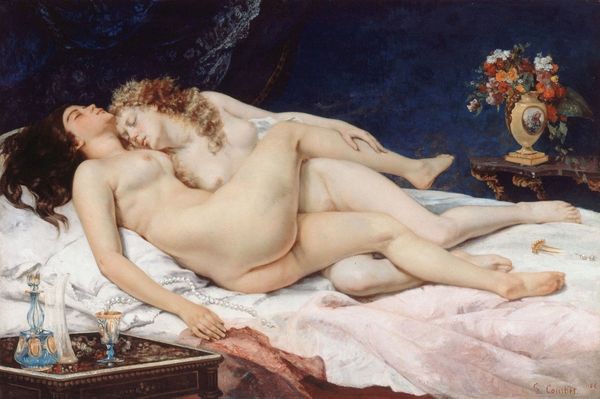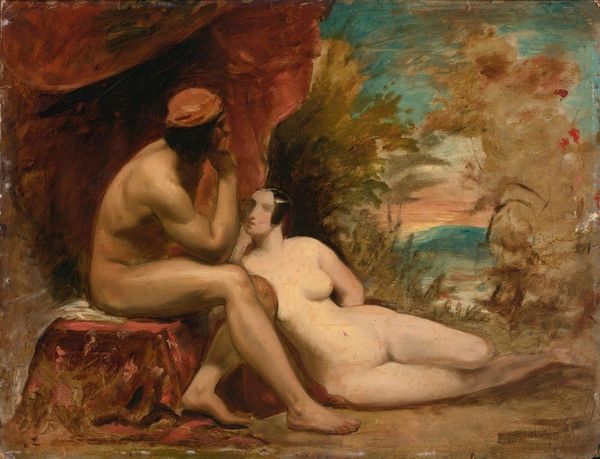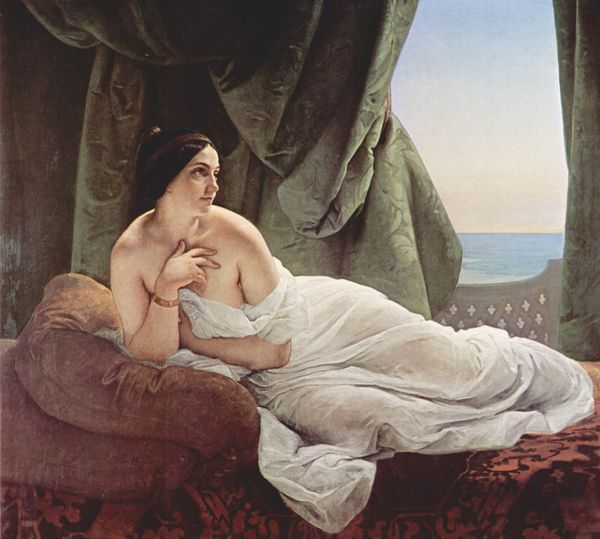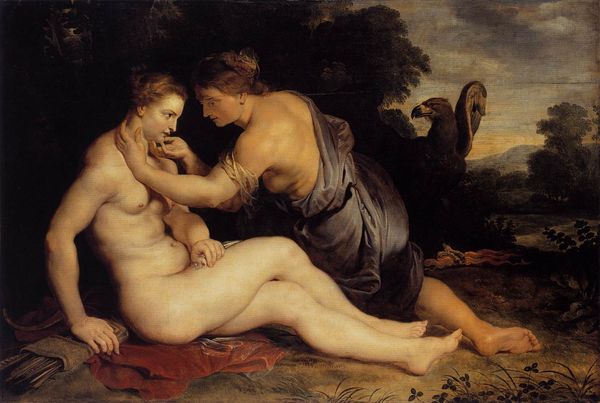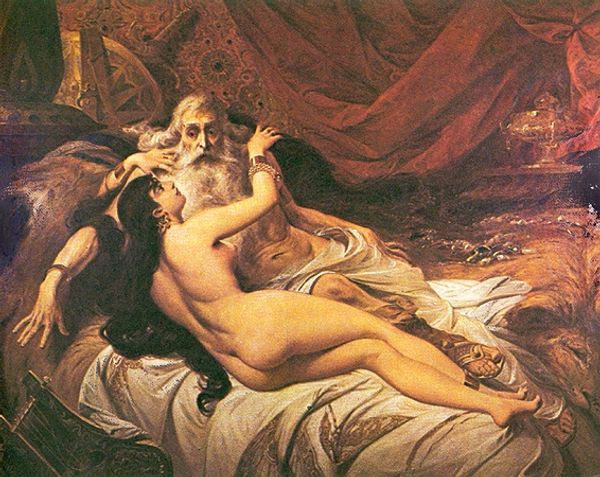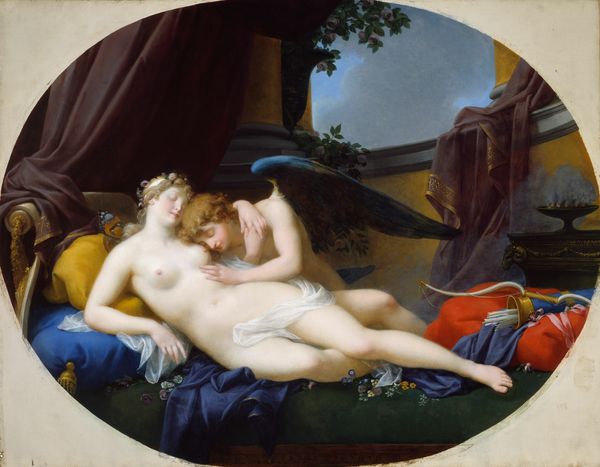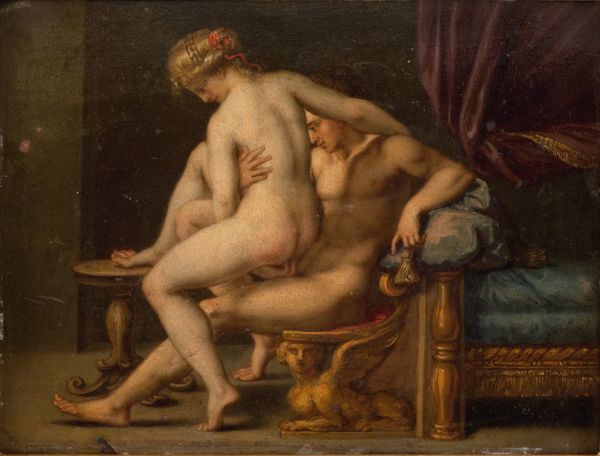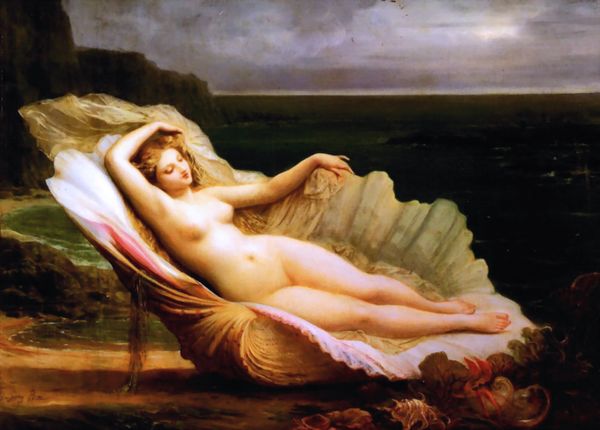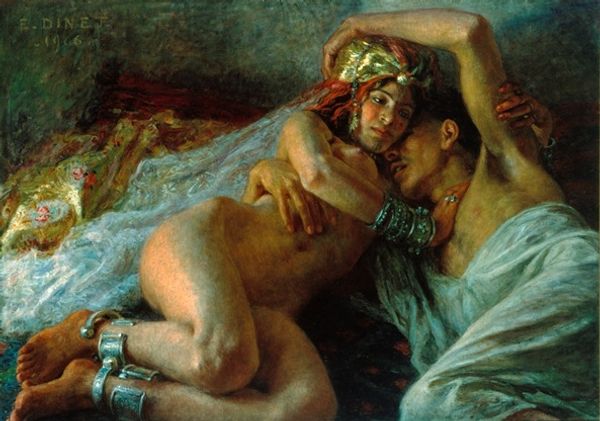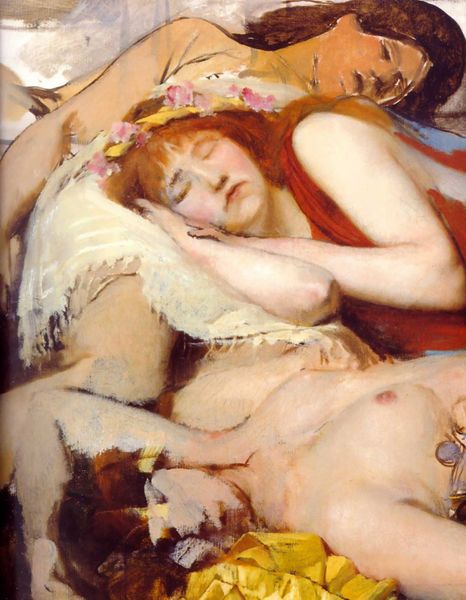
painting, oil-paint
#
painting
#
oil-paint
#
figuration
#
female-nude
#
orientalism
#
genre-painting
#
nude
Copyright: Public domain
Curator: This artwork presents a visual exploration into orientalism through the artist Ernest Hebert’s piece, "Two Odalisques Contemplating the Bosphorus". Editor: Immediately, I'm struck by the juxtaposition of languid serenity and the complex politics embedded within its orientalist gaze; there is also a subtle sensuality here that feels performative, staged for the male gaze, but almost indifferent. Curator: The composition, as I perceive it, uses the classical arrangement of figures against a distant vista. It guides the eye smoothly, particularly through the interplay of forms—note the curvilinear qualities in both figures contrasted by the geometric precision of the carpet’s pattern. It certainly adds a subtle tension, wouldn't you say? Editor: Yes, I see the formal elements at play, yet cannot separate them from the loaded context of colonialism and the representation of the 'Other'. Consider the artist’s construction of the odalisque: is it reverence or appropriation, admiration or objectification? Also, aren't you curious how their lives contrast with women in Europe in that era? Curator: While I appreciate the historical complexities you raise, can we not acknowledge that it reflects a specific engagement with the exotic allure of the East that was a prevalent interest at the time. Looking solely at its design and form— the arrangement is intriguing, even though there’s no explicit narrative. Editor: I find it fascinating how their apparent passivity speaks volumes about the power dynamics at play; by understanding how history and gender intertwine, it leads me to understand how the women here symbolize not merely objects of pleasure but entities existing within—or, more accurately, products of—a larger socio-political framework. The setting by the Bosphorus evokes this threshold where the Orient meets the Occident in ways that carry very real political ramifications, even today. Curator: Perhaps focusing less on those associations would open the work to more flexible readings on cultural encounters... Editor: Ultimately, Hèbert's odalisques offer insight on both orientalist painting’s formal qualities and their reflection on colonial ideologies during a period marked by immense socio-political change. Curator: I see them mainly as the play between formal composition, color balance, and classical form in a nineteenth-century painting, where Hebert really demonstrates painterly technique to construct aesthetic arrangements... Editor: And the viewer also gets to witness art functioning as both reflection and instigator within larger narratives around representation, cultural dominance, and intersectional identities.
Comments
No comments
Be the first to comment and join the conversation on the ultimate creative platform.
